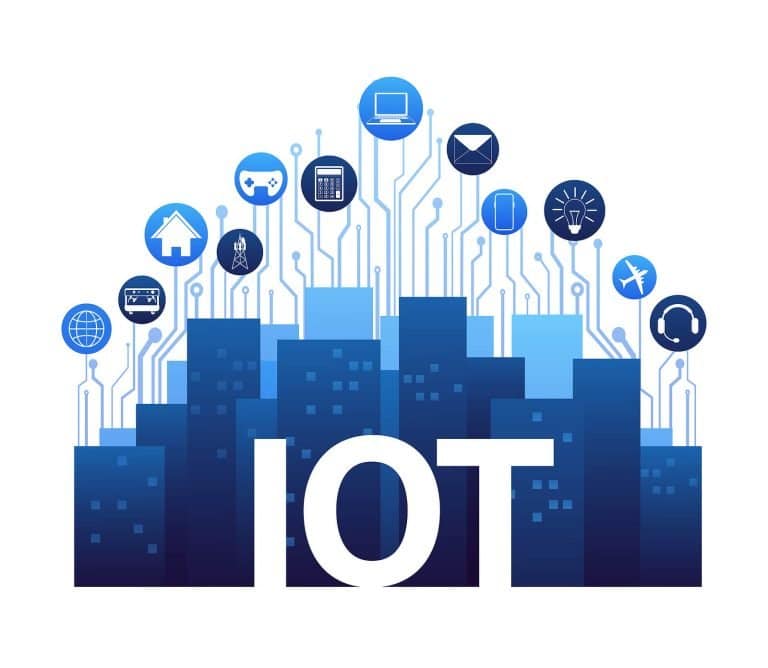As more and more internet-enabled devices and appliances find a place in the connected home, protecting them from hackers becomes an increasing concern – especially since many of these devices weren’t built with security in mind.
Table of Contents
ToggleMost people are now aware of how to protect themselves and their sensitive information when browsing the web – keep your passwords unique and unpredictable, don’t click on links in suspicious-looking emails, only enter your credit card information on secure sites. But it’s a different story when it comes to connected home technology.
As hot new gadgets like smart TVs, smart fridges, smart thermostats, lights, toasters and even toilets are making our homes, indeed, smarter, they’re also making them more vulnerable.
These devices communicate with each other and with the connected homeowner’s smartphone, tablet, or personal computer via Bluetooth or on the home’s Wi-Fi network. The beauty of the technology is that it provides easy remote access and control for a whole host of domestic appliances. However, what the proliferation of these connected devices also means is that there are more and more opportunities for hackers to infiltrate home networks – and that’s exactly what they’re doing.
Rising Security Threats
In September last year, security firm Armis issued a warning over the potential of Bluetooth-based attacks using a new vector it dubbed “BlueBorne”.
(Video source: youtube.com)
“BlueBorne allows attackers to take control of devices, access corporate data and networks, penetrate secure ‘air-gapped’ networks, and spread malware laterally to adjacent devices,” wrote Armis, adding that approximately 5.3 billion gadgets – including connected home devices – around the world were vulnerable to BlueBorne. Later in the year, the company announced that an estimated 20 million Google Home and Amazon Echo devices were susceptible to attack due to the BlueBorne issue.
While these two internet giants successfully released patches to fix the problem on their respective devices – and did so without the need of user interaction – the fact remains that the vast majority of connected home devices cannot be updated in this manner.
This is because the market for these devices is extremely fragmented. No dominant players yet exist. This means that if you’ve got connected gadgets in your home, the chances are they’ve each been manufactured by a different company, and when vulnerabilities like BlueBorne are discovered, there’s no guarantee those manufacturers will release a patch for them – and if they do, there’s likely to be a delay, and users might have to apply it themselves.
As Armis notes, even Amazon Echos and Google Homes will eventually be replaced by new hardware versions, meaning older generations will no longer be provided with updates – potentially leaving them vulnerable to attacks where they’re still in use.
How to Protect Your Connected Home from Attack
Figures from Statista reveal that there are currently more than 23 billion IoT (Internet of Things) connected devices in operation around the world today – a figure projected to more than triple to 75.44 billion by 2025.

(Image source: statista.com)
With such vast numbers of connected home appliances and gadgets in circulation, it’s simply not possible to dig into the specifics of each. As such, we recommend you check the box your devices came in for advice on individual items, or refer to the manufacturer’s website.
However, there is some general advice and guidelines we can give you to keep your devices secure and protect your home and information.
Choose Trusted Brands
When it comes to building a connected home, it pays to buy from trusted brands which are known to take security seriously. Read up on all the products you’ve already purchased or are considering for purchase, and choose only those that make security a top priority. If you’ve already got a house-full of connected devices, you may consider replacing those which lack adequate security.
Run Regular Updates
Unlike your personal computer, most connected home gadgets don’t automatically seek out and install updates as and when they’re released. In fact, many won’t actually be connected to the web in this way in the first place.
As such, the onus is on you as the owner and controller of these devices to check for updates and install them yourself – though they may be offered via the accompanying smartphone app if there is one.
The likelihood is that updates won’t be released on a regular basis – but if a security exploit is discovered, there will hopefully be a patch, which you will need to install as quickly as possible.
Change Your Devices’ Security Settings
Any devices you bring home will come with information guides that tell you how to change the default settings. It’s imperative you do this because it’s easy for hackers to go online and look up the default usernames and passwords manufacturers use when building their products, and use them to gain access to gadgets and networks.
Secure Your Wi-Fi Home Network
The unfortunate fact of the matter is that protecting devices themselves is near enough impossible in many cases – which means you will have to secure the perimeter and get the basics of internet home security right.
This means securing your Wi-Fi home network so hackers can’t gain access in the first place. Make sure you protect it with a complex username and password that no one would be able to guess. As always, use a combination of letters (both upper- and lowercase), numbers and symbols, and avoid using anything that relates to your own name, address, business, partner, or children – including birthdates – as this information is easily acquired in today’s world of social media.
Install Security Software
In addition to strong passwords, install a firewall to protect your devices. You will still be able to use most connected home devices even with a firewall in place – check the information guide in the box or consult the manufacturer’s website.
The other thing to remember is that hackers will often try and gain access to connected home devices via the apps you use to control them. To stay safe, ensure you have professional security software installed on your computer, tablet, and/or smartphone.
Be Serious About Connected Home Security
In truth, all the tips and advice listed above should be routine enough for most people these days. But the fact is that many people are still lax when it comes to their cybersecurity, even if they do indeed know what they should be doing. Considering the growing number of connected home devices now in circulation, it’s high time we all started taking the threat of cyberattacks much more seriously. Keep your software updated, your passwords strong, and the doors and entry points of your connected homes firmly locked.
Summary:
IoT Security
As more and more internet-enabled devices and appliances find a place in the connected home, protecting them from hackers becomes an increasing concern – especially since many of these devices weren’t built with security in mind. Most people are now aware of how to protect themselves and their sensitive information when browsing the web. But it’s a different story when it comes to connected home technology. The beauty of the technology is that it provides easy remote access and control for a whole host of domestic appliances. However, what the proliferation of these connected devices also means is that there are more and more opportunities for hackers to infiltrate home networks. How to Protect Your Connected Home from Attack: 1. Choose Trusted Brands. 2. Run Regular Updates. 3. Change Your Devices’ Security Settings. 4. Secure Your Wi-Fi Home Network. 5. Install Security Software. 6. Be Serious About Connected Home Security.





